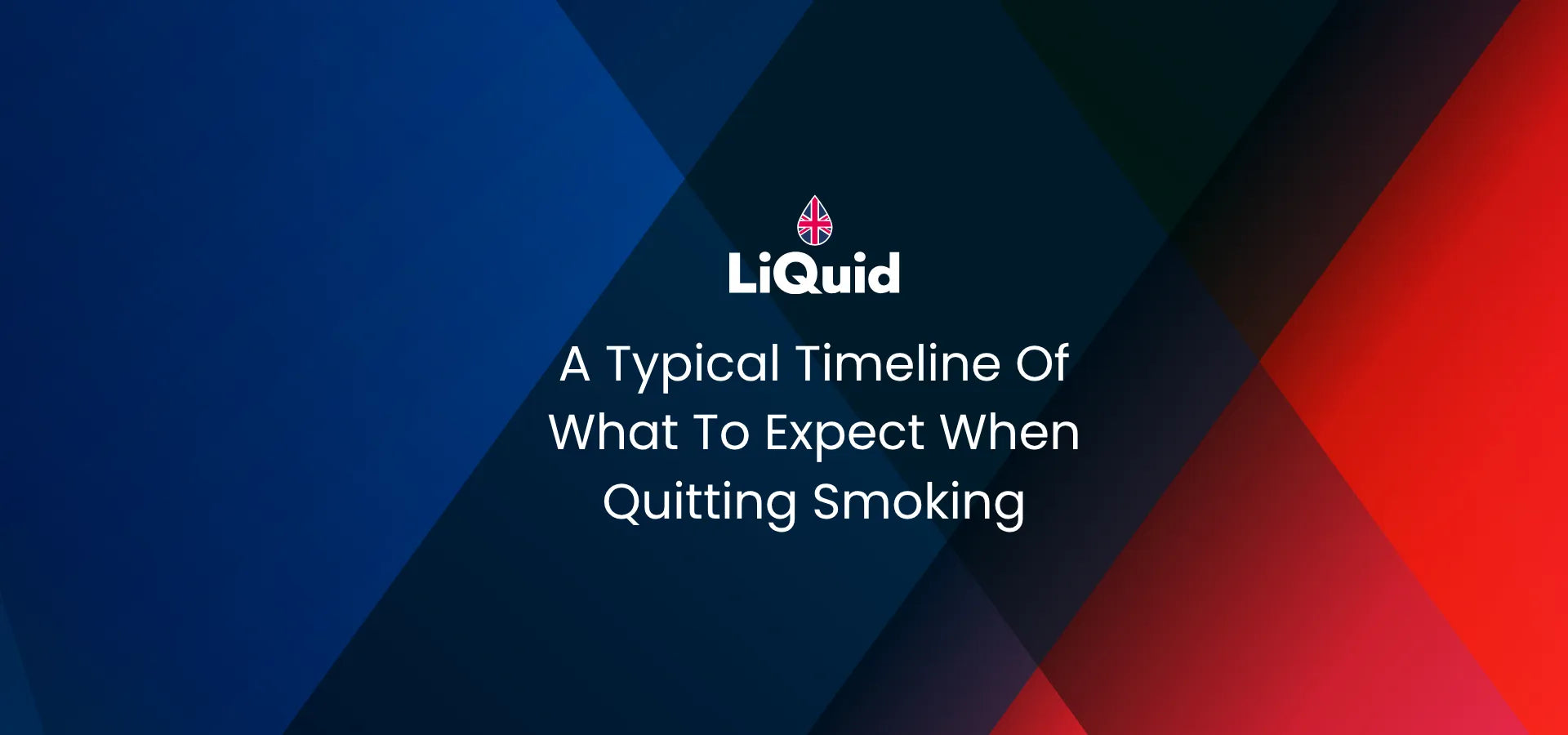A Typical Timeline of What to Expect When Quitting Smoking
Quitting smoking is one of the best things you can do for your health — but knowing what to expect along the way makes it easier to stay motivated. Whether you’re using vaping, nicotine replacement therapy (NRT), or nicotine pouches, understanding the timeline of recovery helps you prepare for both the physical and mental changes ahead.
This guide explains how to prepare for quitting, what happens in your body hour-by-hour and week-by-week, and how to stay on track toward a smoke-free, nicotine-free lifestyle.
How to Prepare Yourself to Quit Smoking
For most people, quitting smoking isn’t a spur-of-the-moment decision — it takes planning and commitment. A little preparation can dramatically increase your chances of success.

1. Choose Your Nicotine Replacement Strategy
When you stop smoking, your body will crave nicotine. Cutting it out completely can cause withdrawal symptoms such as irritability, restlessness, and headaches. That’s why it’s important to use some form of Nicotine Replacement Therapy (NRT) or alternative product, such as:
Nicotine patches, gum, or lozenges
Nicotine pouches (a newer, discreet option)
Vaping — a popular and effective tool, though not yet a prescribed NRT method
These help satisfy nicotine cravings while you gradually reduce your intake and adjust to life without cigarettes.
2. Set Clear Goals and Milestones
Write down what you want to achieve and when. For example:
- Stay smoke-free for one week.
- Reduce nicotine strength after one month.
Setting realistic goals gives you motivation and a sense of progress.
3. Remove Temptation
Get rid of cigarettes, lighters, ashtrays, and anything that reminds you of smoking. The less visible tobacco products are, the less likely you’ll be tempted to relapse.
Out of sight, out of mind is your mantra during the early days.
The Quitting Smoking Timeline — What to Expect
Everyone’s quitting journey is different, but your body follows a general pattern of recovery as it detoxifies from tobacco and adjusts to reduced nicotine levels.
Below is a typical timeline of physical and mental changes based on NHS guidance. If you’re using vaping or another NRT, your withdrawal symptoms may be milder — but the health benefits remain the same.

After 4 Hours
The effects of nicotine begin to fade, and cravings may kick in. This is one of the hardest moments early on, but using nicotine alternatives can help control urges.

After 8 Hours
Your carbon monoxide levels halve, and oxygen in your blood starts returning to normal. Your heart and muscles begin receiving more oxygenated blood.

After 24 Hours
You might feel slightly irritable or restless, but your appetite may increase as your body adjusts. Cravings come in waves — ride them out, and they’ll pass more quickly each time.

After 48 Hours
All carbon monoxide is flushed from your system. You may experience a chesty cough as your lungs start clearing out mucus and toxins.

After 72 Hours
Your bronchial tubes relax, making breathing noticeably easier. Energy levels rise, and you may already feel more alert and active.
After 4 Weeks
Circulation improves, helping blood flow more efficiently to your heart, brain, and muscles. You might also notice clearer thinking as brain fog begins to lift.

After 6 Months
Your lung function improves by around 10%, reducing coughing, wheezing, and shortness of breath. Everyday activities start to feel easier.
After 1 Year
Your risk of a heart attack drops by half compared to when you were smoking.
After 10 Years
Your risk of lung cancer is less than half that of a current smoker.
Each milestone represents a major victory — your body begins healing the moment you quit.
Keep an Eye on Your Vaping Behaviour
If you’re using vaping as your quitting aid, remember that e-liquids come in varying nicotine strengths. One of the biggest advantages of vaping is the ability to gradually reduce nicotine intake — but take it slow.
Tips for Managing Nicotine Strength
- Step down gradually — for example, move from 18mg to 12mg, then to 6mg, then 3mg, before switching to nicotine-free e-liquids.
- Avoid large jumps (e.g., 18mg straight to 6mg), as this may trigger cravings and increase your risk of relapse.
- During stressful periods, it’s okay to use a slightly higher strength temporarily — what matters is your overall downward trend over time.
You can learn more about this process in our guide: Stepping Down Nicotine Strengths
An Example of Your Vaping Journey
Let’s imagine you were a heavy smoker (around 20 cigarettes per day). Here’s how your switch to vaping might look:
- Starting Point: Choose a higher nicotine strength — 18mg Freebase or 20mg Nicotine Salts — to match your usual intake from cigarettes.
- First Few Weeks: Focus on staying smoke-free while your body adjusts. Use your vape as needed to manage cravings.
- Final Goal: Reach a nicotine-free e-liquid — or stop vaping altogether if you prefer.
The key is to go at your own pace. There’s no set timeline; what matters most is consistency and progress toward your smoke-free goal.
Final Thoughts: Take Control of Your Smoke-Free Future
Quitting smoking is a journey — one that takes patience, planning, and perseverance. By preparing properly, understanding the timeline, and using supportive tools like vaping or NRT, you give yourself the best possible chance of success.
Remember:
- You’re in control of your quit journey.
- Small steps add up to big victories.
- Every day smoke-free is a day your body is healing.

